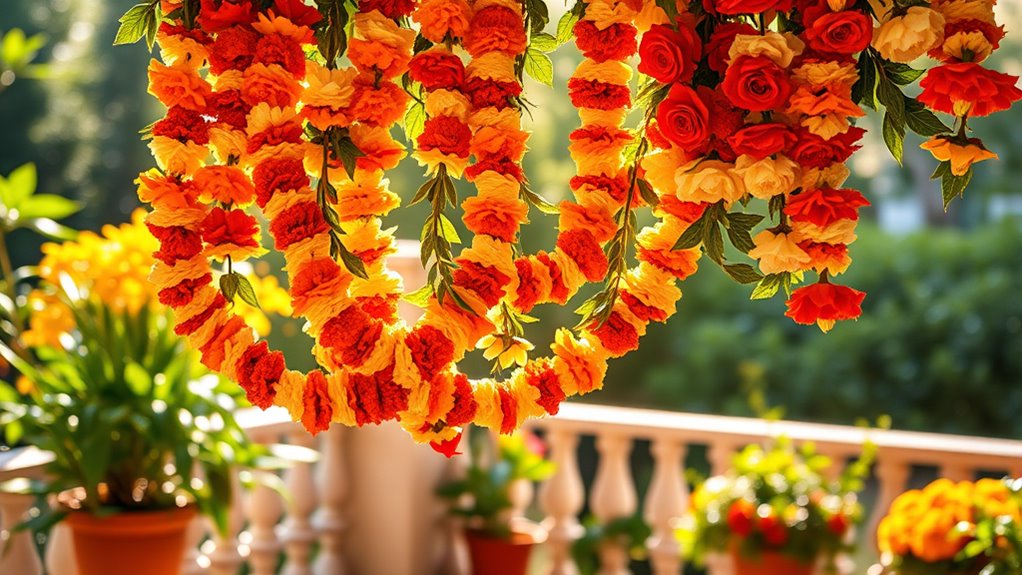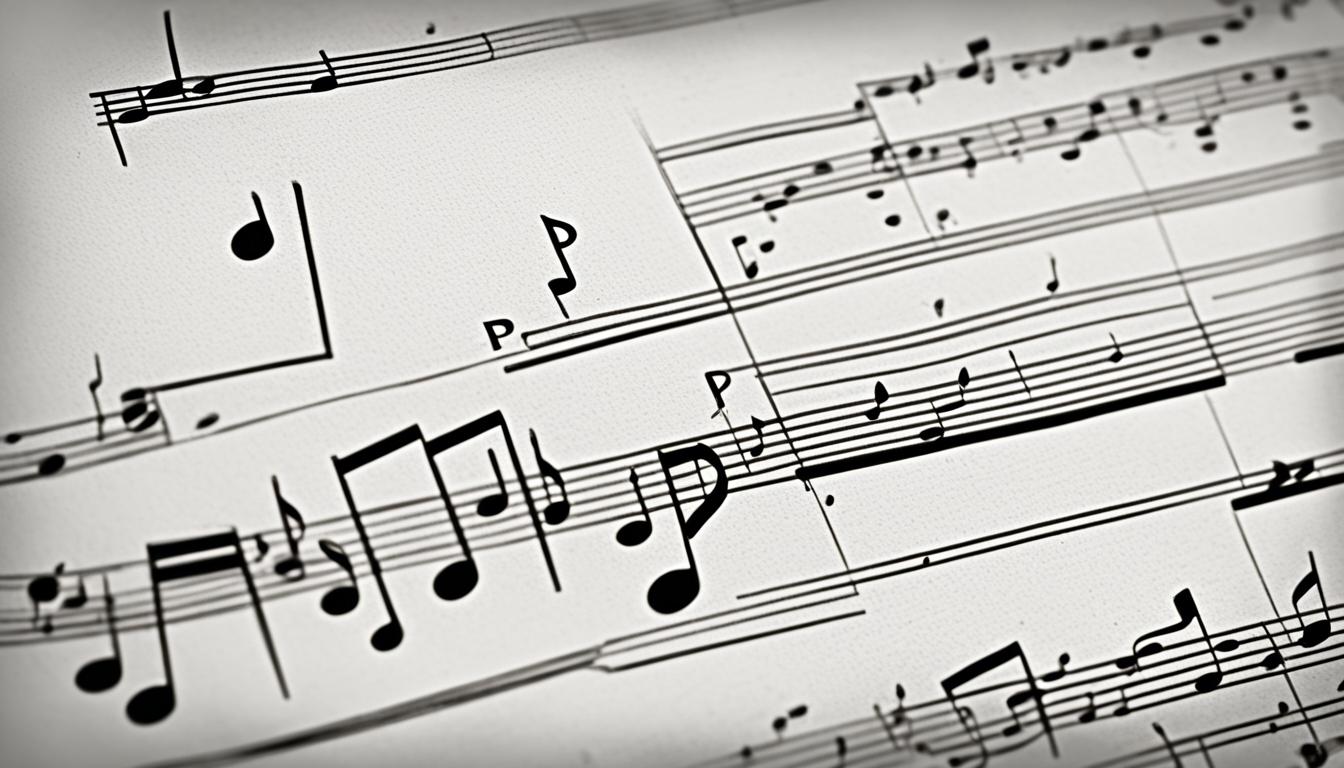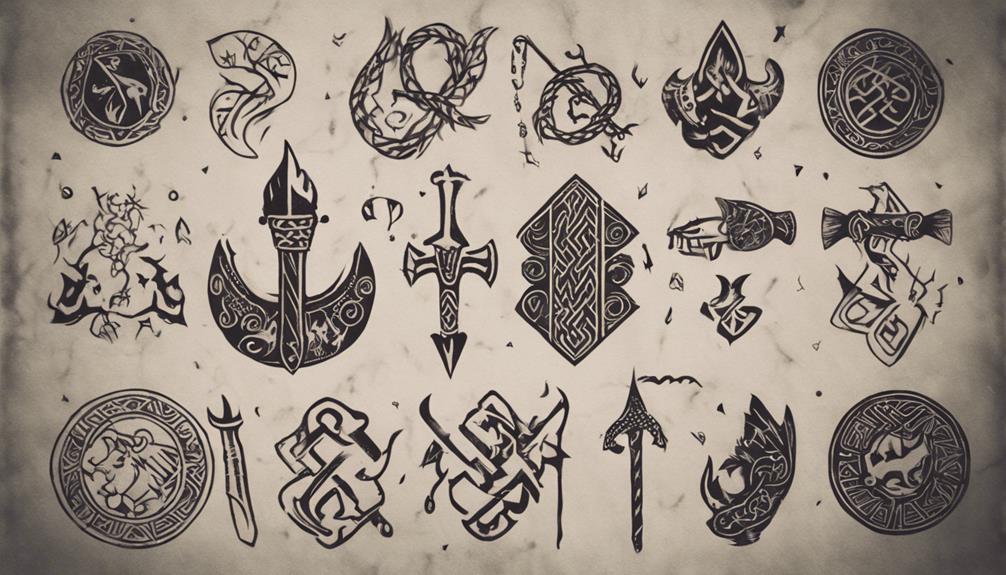Flower garlands in festivals symbolize celebration, respect, and cultural identity. They often use specific flowers like jasmine, marigolds, or orchids to convey meanings such as purity, love, or divine blessings. Regional differences influence their style and symbolism, marking important occasions like weddings or religious events. These decorations do more than beautify; they embody deep cultural stories and values. Exploring their rich symbolism reveals how flowers connect people and traditions, offering insights you’ll find fascinating.
Key Takeaways
- Flower garlands symbolize celebration, purity, love, and respect across cultures, conveying meaningful messages beyond decoration.
- The choice of flowers like white (purity) and red (love) reflects specific cultural and regional symbolism.
- Regional variations influence garland styles, flower selections, and their significance in festivals, religious rituals, and ceremonies.
- In many cultures, garlands honor guests, signify good wishes, or mark special occasions, embodying cultural identity and reverence.
- Appreciating garlands involves understanding their cultural context, floral symbolism, and the messages they convey within traditions.

Flower garlands have long been cherished as powerful symbols across cultures, representing everything from celebration and purity to love and remembrance. When you see a garland draped at a festival or ceremony, you’re witnessing a tradition rooted in deep cultural meanings that go beyond simple decoration. These adornments serve as a visual language, conveying respect, joy, or reverence depending on the context. Understanding the cultural interpretations of flower garlands helps you appreciate their significance and the emotions they evoke. In many societies, the choice of flowers, arrangement style, and placement can carry specific messages. For example, in some cultures, white flowers symbolize purity and spiritual connection, while vibrant reds may represent love or auspiciousness. The regional variations are equally fascinating, as they influence how garlands are crafted and perceived. In India, for instance, marigolds and jasmine are staples, often used in religious rituals and weddings, symbolizing prosperity and divine blessings. Conversely, in Southeast Asia, garlands might feature orchids or roses, reflecting local floral abundance and aesthetic preferences. These regional differences shape the way garlands are integrated into celebrations, making them unique markers of cultural identity. When you participate in a traditional event that includes a flower garland, you’re engaging with a symbol that’s deeply embedded in local customs and values. The same gesture—placing a garland around someone’s neck or on an altar—can have vastly different meanings depending on where you are. In Thailand, garlands are offered to honor guests or mark special occasions, symbolizing respect and good wishes. In contrast, in Western contexts, flower chains might be used more casually for decoration or to celebrate achievements, with less emphasis on their spiritual significance. Recognizing these regional variations allows you to approach flower garlands with greater sensitivity and appreciation, understanding that they are more than mere adornments—they’re expressions of cultural identity and collective memory. Whether you see a garland at a wedding, religious festival, or a public celebration, remember that each one carries layers of meaning rooted in history and tradition. By paying attention to the specific flowers used, their arrangement, and the cultural context, you can gain insights into the community’s values and beliefs. In every region, flower garlands serve as a bridge connecting people through shared symbols, reinforcing bonds of tradition, celebration, and respect.
Frequently Asked Questions
How Do Different Cultures Interpret Flower Garland Symbolism?
You’ll notice that different cultures interpret flower garland symbolism through regional variations and cultural symbolism. In India, garlands symbolize respect and blessings, often used in ceremonies. In Hawaii, leis represent love and hospitality, while in Thailand, they honor deities and spirits. These regional variations highlight how flower garlands serve as meaningful expressions of cultural values, connecting people through shared traditions and spiritual beliefs across diverse societies.
What Are the Most Common Flowers Used in Traditional Garlands?
You might think exotic blooms dominate, but traditional garlands often feature familiar flower types like jasmine, marigolds, and roses. Ironically, seasonal variations shape what’s most common—spring favors cherry blossoms, while summer highlights hibiscus. These flowers symbolize purity, prosperity, or love, depending on the culture. So, while the flower types are simple, their seasonal significance adds layers of meaning, making each garland uniquely rich in tradition.
Can Flower Garlands Be Reused or Recycled?
Yes, you can reuse or recycle flower garlands to promote sustainable reuse and eco-friendly recycling. To do so, carefully dismantle the garland, preserving the flowers if they’re fresh, or repurpose dried ones for crafts or composting. Avoid throwing away discarded flowers; instead, compost or donate them. This way, you reduce waste, support eco-conscious practices, and enjoy your decorations longer while caring for the environment.
How Do Flower Garlands Influence Festive Atmosphere?
Your flower garlands transform the festive atmosphere into an enchanting wonderland, making everyone feel like they’ve stepped into a dream. Their mesmerizing flower scent fills the air, creating an irresistible aura of celebration. The vibrant visual appeal instantly elevates the mood, making your event unforgettable. With each blossom, you ignite joy and unity, turning ordinary gatherings into extraordinary moments that linger long after the festivities end.
Are There Specific Rituals Associated With Presenting Flower Garlands?
Yes, there are specific rituals associated with gifting flower garlands. When you gift a flower garland, you should follow proper flower garland etiquette, such as offering it with both hands and a respectful bow. In many cultures, you might also bless the recipient or say a prayer before presenting the garland. These rituals honor tradition and show your respect, making the act of gifting more meaningful and heartfelt.
Conclusion
So, next time you hang a flower garland, remember it’s more than just pretty decor. While you think you’re celebrating tradition or adding beauty, you’re actually weaving centuries of symbolism and hope into your space. It’s ironic how something so simple can carry such profound meaning—reminding us that even in our most festive moments, we’re quietly honoring stories, beliefs, and connections that outlast us all. Who knew a flower garland could be so powerfully poetic?










